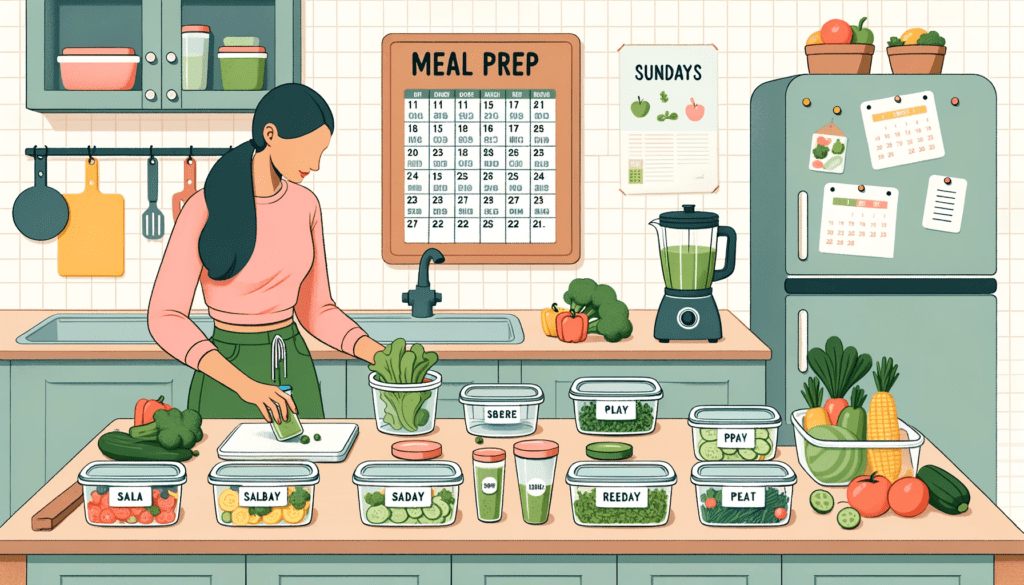In a world of ever-increasing expenses, food remains a substantial part of our monthly budget. Whether it’s the lure of gourmet dining, the comfort of fast food, or the routine grocery haul, many find themselves spending more on food than they’d prefer. Yet, feeding ourselves and our families doesn’t have to break the bank. With a little knowledge and a sprinkle of creativity, one can eat nutritiously without compromising the palate or the wallet. In this guide, we’ll delve deep into innovative ways to savor flavors while safeguarding your savings.
Creating a Meal Blueprint
Before setting foot in a grocery store, the first, and perhaps most potent, weapon against overspending is planning. Taking a few moments to strategize can make a world of difference. Here’s how to create an effective meal blueprint:

- Weekly Menus: Instead of thinking about meals on a daily basis, consider planning a week or even a month ahead. This reduces the chances of impulse buying and helps you purchase in bulk, often leading to discounts.
- Inventory Check: Before drafting your shopping list, take stock of what’s already in your pantry, fridge, and freezer. Build meals around these items, prioritizing those with approaching expiration dates.
- Flexible Recipes: Opt for recipes that can be easily adapted based on what’s on sale or in season. For instance, a stir-fry can accommodate almost any vegetable, and a basic pasta sauce can be tweaked with varying proteins or herbs.
- Sale Cycles: Familiarize yourself with your local grocery store’s sale cycles. Most stores rotate their sales, so if an item isn’t discounted this week, it might be the next. By tracking these cycles, you can plan to buy and stock up on staples when they’re cheapest.
- Avoiding Peak Shopping Times: Shopping during off-peak hours can lead to reduced prices on perishables nearing their “sell-by” date. Stores often discount these items to clear out inventory.
Remember, the goal isn’t just to spend less but to make each dollar work harder, ensuring both nutritional and financial health.
Grow, Forage, and Reduce: Embracing Sustainability
In the rush of modern life, we often forget that nature offers a bounty of food resources, many of which are free for the taking. Embracing sustainable and localized eating practices not only benefits the environment but also significantly reduces food expenses.
- Home Gardening: Even with limited space, many vegetables and herbs can be grown at home. Container gardening or vertical gardening are great solutions for apartment dwellers. Seeds are inexpensive, and with care, can yield a generous crop that lasts.
- Foraging: It’s surprising how much edible flora surrounds us. Local parks, forests, and even urban areas harbor edible plants, fruits, and mushrooms. However, always ensure you’re knowledgeable about what’s safe to consume and consult local foraging guides or experts.
- Reduce Waste: Adopt a “root-to-stem” or “nose-to-tail” philosophy. Many parts of vegetables and meats that we usually discard can be used to make broths, stocks, or other dishes. Compost what you can’t consume to enrich your garden soil.
- Preservation Techniques: Make the most of seasonal abundance by learning preservation techniques like canning, freezing, and drying. This ensures you have a variety of foods available all year round, without resorting to pricier store-bought alternatives.
Mastering the Art of Frugal Purchasing
You don’t have to compromise on quality to save on food shopping. By being a discerning shopper, you can secure the best deals without sacrificing your dietary preferences.

- Local Farmers’ Markets: Often, local markets offer fresher produce at competitive prices. Buying directly from producers also ensures lower costs by cutting out the middleman. Plus, you’re supporting local farmers and the community.
- Bulk Buying: Warehouse stores or bulk sections in grocery stores can be treasure troves for non-perishable items like grains, pulses, and spices. Buying in bulk usually means a reduced price per unit.
- Store Brands vs. Name Brands: In many cases, store brands (or generic brands) are produced in the same facilities as name brands. They offer comparable quality but at a fraction of the price.
- Digital Coupons and Cashback Apps: Leverage technology to find the best deals. Many stores offer digital coupons on their apps, and there are various third-party apps that provide cash back on grocery purchases.
- Price Comparison: Dedicate some time to compare prices among different stores. While one might offer a better deal on dairy, another might have cheaper produce.
By honing your shopping skills and embracing a mindful approach, you can feast like a king while spending like a pauper.
Meal Planning and Prep: A Game-Changer for Your Wallet
Planning your meals in advance is a strategic way to cut down on unnecessary food expenses. It reduces impulse purchases, minimizes waste, and ensures you’re making the most of every ingredient.
- Weekly Meal Plans: Before you head to the store, chart out your meals for the week. Factor in breakfasts, lunches, dinners, and even snacks. This helps in creating a focused shopping list, ensuring you buy only what you need.
- Batch Cooking: When you have some free time, cook meals in large quantities. Portion them out and freeze for future use. This not only saves money but also time on busy days when cooking from scratch isn’t feasible.
- Versatile Ingredients: Stock up on ingredients that can be used in multiple dishes. For instance, canned tomatoes can be a base for pasta sauce, soups, curries, and stews.
- Repurpose Leftovers: Got some leftover roast chicken? Turn it into a salad, sandwich, or stir-fry the next day. Being creative with leftovers ensures no food goes to waste and provides variety in your diet.
Embrace Simple, Nutritious, and Cost-Effective Meals
There’s a misconception that eating well means spending a lot. However, many nutritious foods are incredibly cost-effective, and simple meals can be both delicious and satisfying.

- Beans and Lentils: These are protein-packed, versatile, and far cheaper than most meats. They can be the star of soups, stews, salads, and even burgers.
- Seasonal Produce: Buying fruits and vegetables that are in season often means they’re at their cheapest and freshest. They require less transportation and storage, which cuts down their cost.
- Whole Grains: Foods like brown rice, barley, and oats are not only filling but also offer great nutritional value for their cost.
- Homemade Snacks: Instead of pricey store-bought snacks, opt for homemade alternatives. Popcorn kernels, for example, are cheap and can be popped at home for a fraction of the cost of pre-packaged popcorn.
- Water Over Sugary Drinks: Tap water is virtually free and a healthier choice over sugary sodas and juices. If you crave flavor, add a slice of lemon or cucumber for a refreshing twist.
By reverting to basics and focusing on whole, unprocessed foods, you can achieve a balanced diet that’s both economical and nourishing. It’s a testament to the fact that good health and a tight budget can, indeed, go hand in hand.
International Cuisines: Dive into World Flavors on a Budget
Often, we associate exotic foods with fancy restaurants and hefty bills. But the truth is, many international dishes that originated from humble beginnings are wallet-friendly and immensely flavorful. Exploring global cuisines can not only add variety to your meals but also keep your expenses in check.

- Indian Daal: Made from lentils, this creamy, spicy stew is nutritious and goes a long way. Served with rice or bread, it’s a staple that feeds millions daily in its home country.
- Mexican Beans and Rice: A simple combination of beans, rice, and spices can deliver a powerful taste punch. Top with some fresh salsa for an added zing.
- Asian Stir-fries: Using a mix of whatever vegetables are on sale, combined with some tofu or a small amount of meat, and flavored with inexpensive condiments like soy sauce and garlic, stir-fries are quick, delicious, and light on the pocket.
- Middle Eastern Falafel: Made from chickpeas and spices, falafels are both tasty and economical. Serve them in pita pockets with veggies for a fulfilling meal.
By turning to the global kitchen, you not only enrich your palate but also discover countless ways to eat well without breaking the bank.
Eating well doesn’t necessarily mean pouring out your wallet. With some smart strategies, a pinch of creativity, and a dash of effort, you can relish delicious meals that are both budget-friendly and nutritious. From shopping smartly to exploring the vast culinary treasures of the world, saving on food is about making informed choices. So the next time you’re in the kitchen or at the grocery store, remember: a full belly doesn’t have to mean an empty pocket. Eat wisely, spend smartly, and savor every bite.



I’ve been growing a garden and eating healthier for less money. It’s a good deal no matter how you look at it.